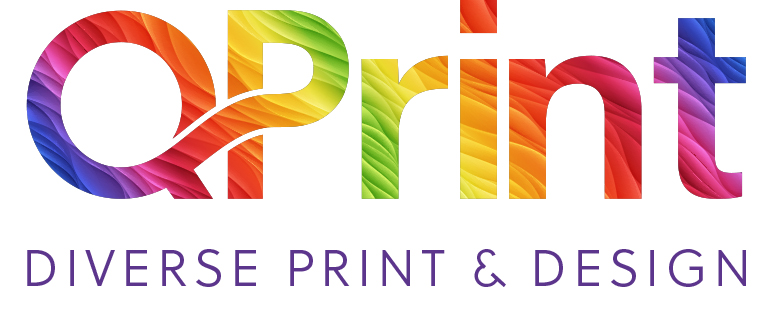In today’s digital world, printed materials can help a small business to stand out in a busy and cluttered landscape. We can use print in many ways, from producing flyers, designing a direct marketing campaign to creating business cards and letterheads. Understanding the nuances of the printing world can go a long way to ensure that your campaigns are successful, create the right impression, and, most importantly, ensure we are focused on our marketing budget investments. In our latest blog, we wanted to share with you 8 things that you might not know about the world of print.
1. What is CMYK vs RGB Colour?
Both RGB and CMYK are modes for mixing colour in graphic design. RGB (Red, Green and Blue) is the colour referencing for digital images and is ideal if your design is to be displayed on any kind of screen.
CMYK (Cyan, Magenta, Yellow, Key/Black) is the colour referencing for printed materials and should be used for any design that will be physically printed such as brochures, flyers or letterheads.
2. Spot vs Full Colour
For spot colour printing a pre-mixed ink is used. They also allow you to print something non-traditional, such as vivid fluorescent colours or metallic tones. Spot colour printing is often used for promotional merchandise.
Full-colour printing uses the CMYK print method by placing very fine dots of the colours next to each other in various percentages. The combination of these four inks gives you a huge range of colours and full design flexibility.
3. What are Crop Marks?
Crop marks are thin lines placed around the corners of a document. They tell the printer where to trim the paper. As many print jobs need to be trimmed to exact dimensions, the crop marks indicate where the document will be cut.
4. What is bleed?
When imagery or design elements extend beyond any page edge, this is known as a bleed. As most printing presses can’t print right to the edge of a piece of paper, your product will be printed on a larger sheet than is required. This is then trimmed down to size once it comes off the press.
As it’s impractical to cut exactly to size, designs with elements that fit up to the edge of the page could be left with thin white lines around their edges when trimmed. To prevent this, the background colour and images are extended by a further 3mm, known as adding bleed. When the printouts are trimmed to size, no white lines will be visible.
5. The Difference in colour on and off screen
Often no matter how hard you try you won’t be able to match screen colours for print, you will find they appear lighter and brighter on your screen. This is because screens emit light, which is why colours on your monitor and phone will appear brighter and more vibrant. Ink absorbs into paper giving a flatter appearance, if you want slightly more vibrant colours try printing your design onto a coated paper where the inks sits on the paper rather than being absorbed.
6. What is DPI?
DPI stands for dots per inch which means how many dots of printing you get per inch. It is also known as resolution. When more dots are squeezed into a square inch, the resulting image is sharper. So a higher DPI means a clearer and crisper print. For printing, the recommended resolution for all images and art files is 300 DPI. Most screens will use a dpi of between 72 DPI and 96 DPI so images used for websites are not suitable for print as the will appear pixelated.
7. Paper Weights Explained
Paper weight doesn’t refer to the weight of individual sheets of cut paper. Paper is generally measured in gsm, grams per square metre. As the unit name suggests, it tells you what one square metre of the paper would weigh and does not consider standard sizes. Consequently, you can compare different types of paper in terms of weight if you look solely at the weight as it is stated in gsm.
Here are some examples of what item you might print on different types of paper weights:
- 60-70 gsm paper – Carbon copy, NCR sets.
- 80 gsm paper – basic letters and photocopier.
- 100-120 gsm paper – standard to premium stationery eg: letterheads and envelopes.
- 130-150 gsm paper – standard flyers, leaflets, posters, brochures.
- 170 gsm paper – good quality leaflets and flyers.
- 200-300 gsm paper – Premium quality leaflets and booklet covers.
- 350-450 gsm paper – Loyalty cards and business cards.
8. Sustainability Considered
When delving into the world of print, it’s important to consider your environmental impact. With this in mind, here are our tips for considering sustainability as part of your next printing project:
- Only order what you need (this is where print planning comes in!).
- Don’t include specific dates or offers on signage to get more use out of them.
- Choosing a print supplier who disposes of print waste responsibly.
- Switching to more sustainable office stationery like recycled paper.
- Explore eco friendly alternatives for promotional merchandise such as biodegradable cornstarch products and recyclable plastics.
In Summary
We hope this has given you some insight into the world of printing. Of course, throughout the print process, our team is on hand to ensure the right colour mode is used and print quality is maintained so you can bring your print vision to life for your marketing campaigns. Get in touch to discuss your next print project.
